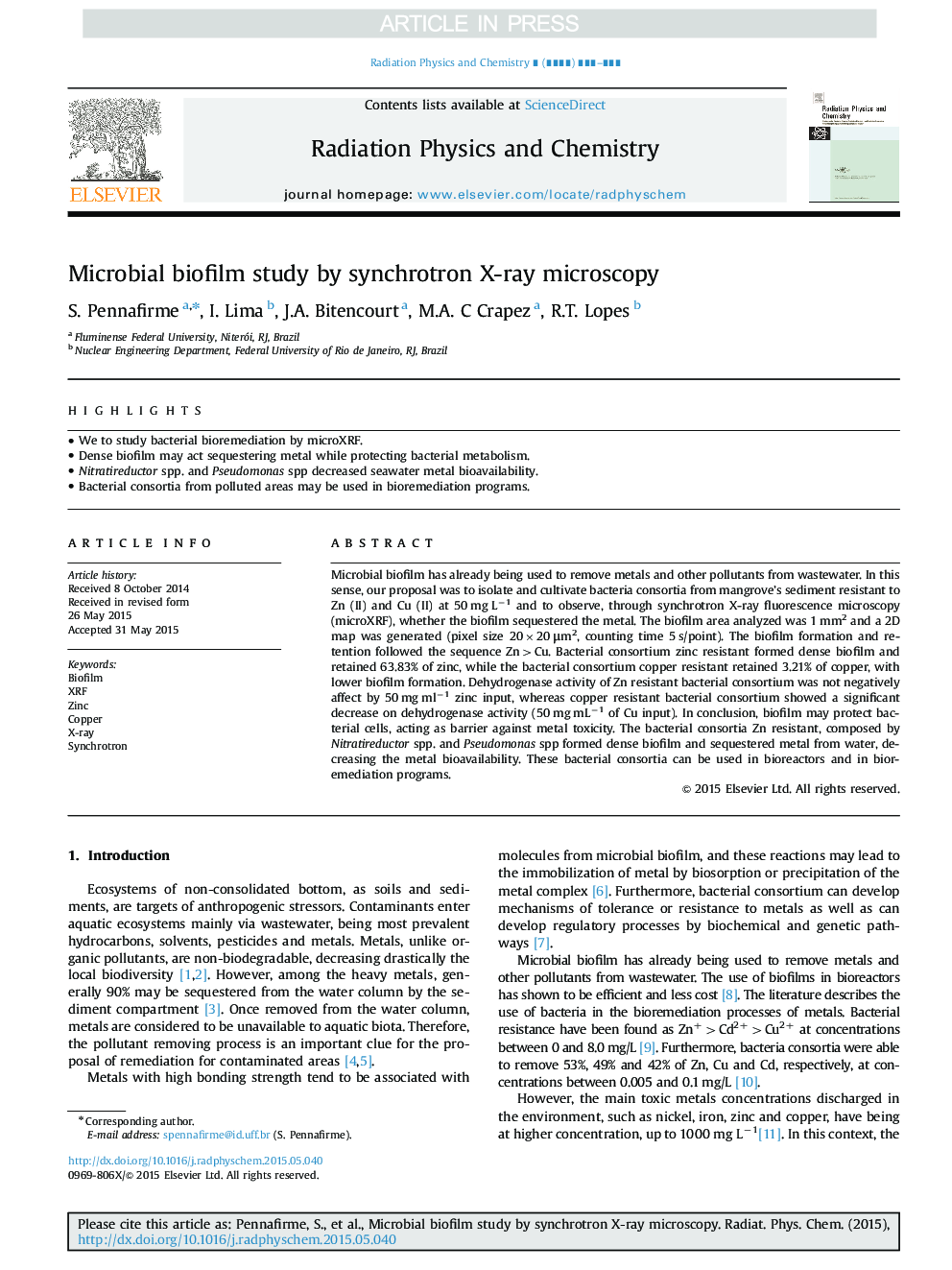| Article ID | Journal | Published Year | Pages | File Type |
|---|---|---|---|---|
| 8252507 | Radiation Physics and Chemistry | 2015 | 4 Pages |
Abstract
Microbial biofilm has already being used to remove metals and other pollutants from wastewater. In this sense, our proposal was to isolate and cultivate bacteria consortia from mangrove's sediment resistant to Zn (II) and Cu (II) at 50 mg Lâ1 and to observe, through synchrotron X-ray fluorescence microscopy (microXRF), whether the biofilm sequestered the metal. The biofilm area analyzed was 1 mm2 and a 2D map was generated (pixel size 20Ã20 μm2, counting time 5 s/point). The biofilm formation and retention followed the sequence Zn>Cu. Bacterial consortium zinc resistant formed dense biofilm and retained 63.83% of zinc, while the bacterial consortium copper resistant retained 3.21% of copper, with lower biofilm formation. Dehydrogenase activity of Zn resistant bacterial consortium was not negatively affect by 50 mg mlâ1 zinc input, whereas copper resistant bacterial consortium showed a significant decrease on dehydrogenase activity (50 mg mLâ1 of Cu input). In conclusion, biofilm may protect bacterial cells, acting as barrier against metal toxicity. The bacterial consortia Zn resistant, composed by Nitratireductor spp. and Pseudomonas spp formed dense biofilm and sequestered metal from water, decreasing the metal bioavailability. These bacterial consortia can be used in bioreactors and in bioremediation programs.
Related Topics
Physical Sciences and Engineering
Physics and Astronomy
Radiation
Authors
S. Pennafirme, I. Lima, J.A. Bitencourt, M.A.C. Crapez, R.T. Lopes,
